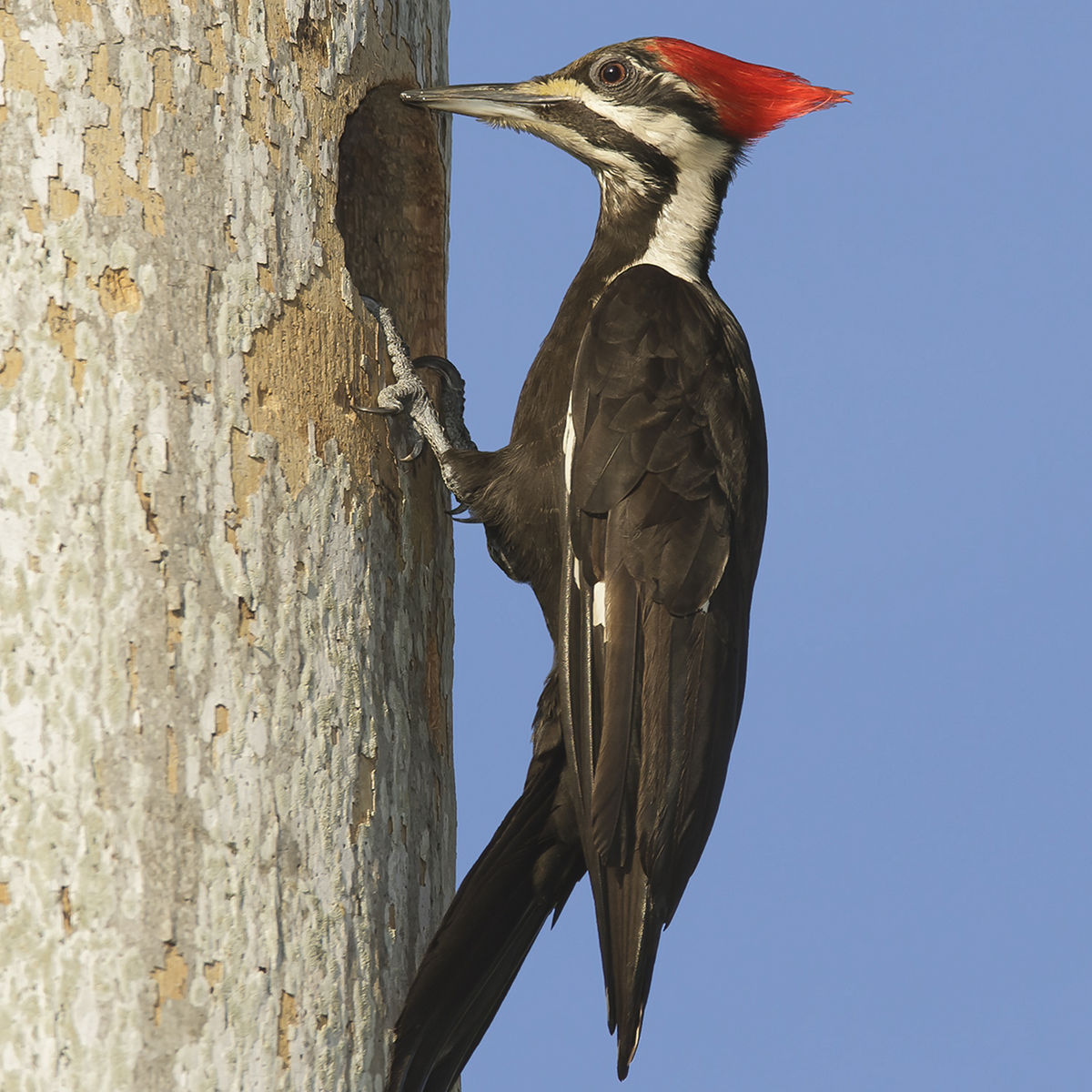Comprehending Woodpeckers in Florida: Behavior, Species, and Habitats
Comprehending Woodpeckers in Florida: Behavior, Species, and Habitats
Blog Article
Woodpeckers Unleashed: Discovering the Marvels of These Proficient Tree Mountain Climbers
Woodpeckers, with their distinct markings and balanced drumming resembling via wooded areas, hold a special area in the bird world - Woodpeckers in Florida. As we dive into the complex information of woodpeckers' nesting habits, feeding methods, and the continuous conservation initiatives to shield these exceptional birds, a much deeper gratitude for their place in nature unfolds.
Makeup and Adaptations
When checking out the anatomy and adaptations of woodpeckers, one can observe remarkable attributes that allow these birds to prosper in their specialized eco-friendly particular niche. Woodpeckers are geared up with a collection of special physiological characteristics that help them in their woodpecking habits. Among the most noticeable attributes is their strong, chisel-like beak, which is specialized for boring into timber to reveal insects or produce nesting dental caries. This beak is sustained by strong neck muscle mass and an extremely created skull structure that acts as a shock absorber, allowing woodpeckers to repeatedly eat trees without triggering brain injury. Additionally, woodpeckers have zygodactyl feet, with 2 toes facing ahead and 2 dealing with backward, offering a company grasp on tree trunks while they look for food or drum for interaction.
Furthermore, woodpeckers have an one-of-a-kind tongue structure that is long, barbed, and sticky, enabling them to remove bugs from crevices in timber. This customized adjustment permits woodpeckers to manipulate a food source that is inaccessible to numerous other bird types. Generally, the composition and adjustments of woodpeckers showcase the amazing transformative solutions that have allowed these birds to flourish in their arboreal habitat.
Drumming Behavior
Having actually explored the makeup and adaptations of woodpeckers, the emphasis currently shifts to recognizing their drumming habits, a distinct element of their interaction and territorial screens. Drumming is a vital kind of communication among woodpeckers, serving multiple objectives such as developing areas, bring in companions, and signaling alarm system. Each woodpecker varieties has an one-of-a-kind drumming pattern that helps people recognize participants of their very own species and differentiate them from rivals or predators.
Woodpeckers create drumming sounds by swiftly pecking on powerful surface areas such as dead trees, utility posts, and even steel objects, producing a series of balanced beats. The strength and rate of drumming can vary based upon the purpose; for example, a quick drumming series might symbolize aggression in the direction of trespassers, while a slower and softer drumming pattern can suggest courtship (Woodpeckers in Florida). Furthermore, woodpeckers might adjust the frequency and period of their drumming to convey certain messages efficiently
Nesting Habits
Exploring the nesting habits of woodpeckers reveals fascinating insights into their reproductive habits and habitat choices. Woodpeckers are recognized for their one-of-a-kind nesting preferences, commonly excavating dental caries in trees to create sheltered areas for elevating their young. These dental caries serve not just as a nesting site but additionally as a protected haven from predators and severe weather condition.
Woodpeckers display a high degree of fidelity to their nesting websites, often going back to the very same area every year. This behavior highlights the value of appropriate habitat schedule for Get More Info their reproductive success. The selection of a nesting website is essential for woodpeckers, with variables such as tree varieties, height, and decay stage playing significant roles in their decision-making procedure.
Surprisingly, some woodpecker types are understood to dig deep into numerous tooth cavities within their region, offering themselves with alternate nesting choices. This method may work as a form of insurance coverage against prospective threats or disturbances to their main nesting website.

Feeding Strategies
Woodpeckers utilize a selection of specialized feeding techniques to procure their main food sources. One of one of the most unique feeding behaviors of woodpeckers is drumming, which includes fast pecking on trees to uncover pests underneath the bark. This drumming not just assists them situate victim but also acts as a means of communication with other woodpeckers. Woodpeckers have strong, chisel-like beaks that allow them to pierce right into timber effortlessly. When an opening is produced, they utilize their lengthy, barbed tongues to remove pests such as ants, beetles, larvae, and spiders. These tongues are covered with sticky saliva that helps trap the victim. Woodpeckers are likewise understood to dig deep into cavities in trees to access surprise insect larvae or sap. Some species, like the acorn woodpecker, shop nuts in specifically created pop over to this site holes called granaries. This strategic saving of food assists them survive throughout food scarcity periods. Woodpeckers are genuinely exceptional in their feeding methods, showcasing adaptability and knowledge in procuring their nutrition.
Preservation Efforts
Among the detailed feeding techniques exhibited by woodpeckers, the preservation initiatives targeted at securing these fascinating birds play an essential duty in protecting their environments and populaces. Woodpeckers face various dangers to their survival, consisting of habitat loss as a result of deforestation, climate adjustment modifying their communities, and accidents with man-made frameworks such as structures and cars - Woodpeckers in Florida. Conservationists are proactively functioning to deal with these challenges and make certain the long-term well-being of resource woodpecker types

Education and public recognition projects are likewise essential components of woodpecker conservation initiatives. By raising awareness concerning the importance of these birds in keeping healthy woodland communities, preservationists can garner assistance for habitat preservation initiatives and advertise responsible land monitoring practices. Through collaborative efforts between scientists, policymakers, and local communities, we can interact to secure a future where woodpeckers grow in their natural environments.
Conclusion

Report this page